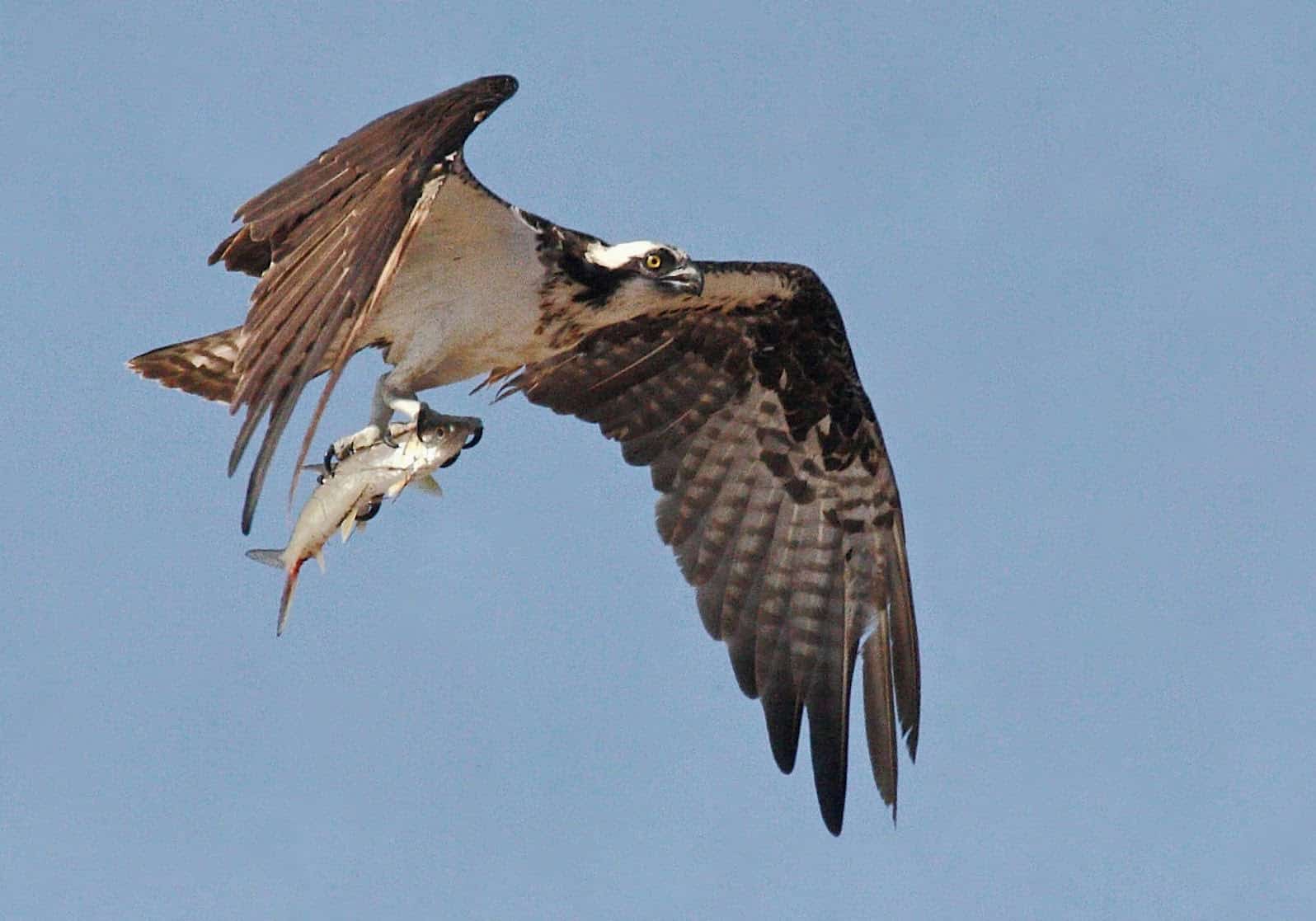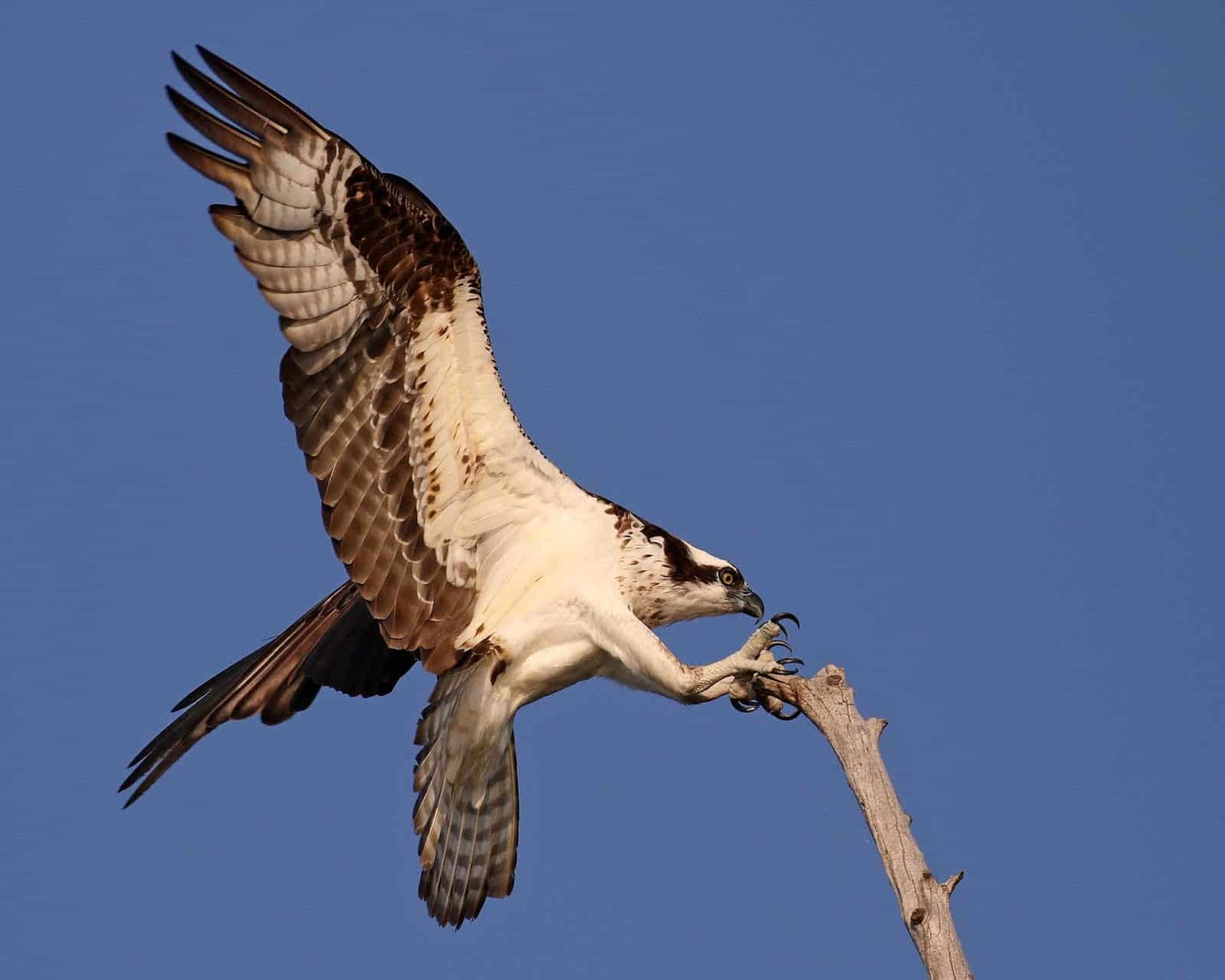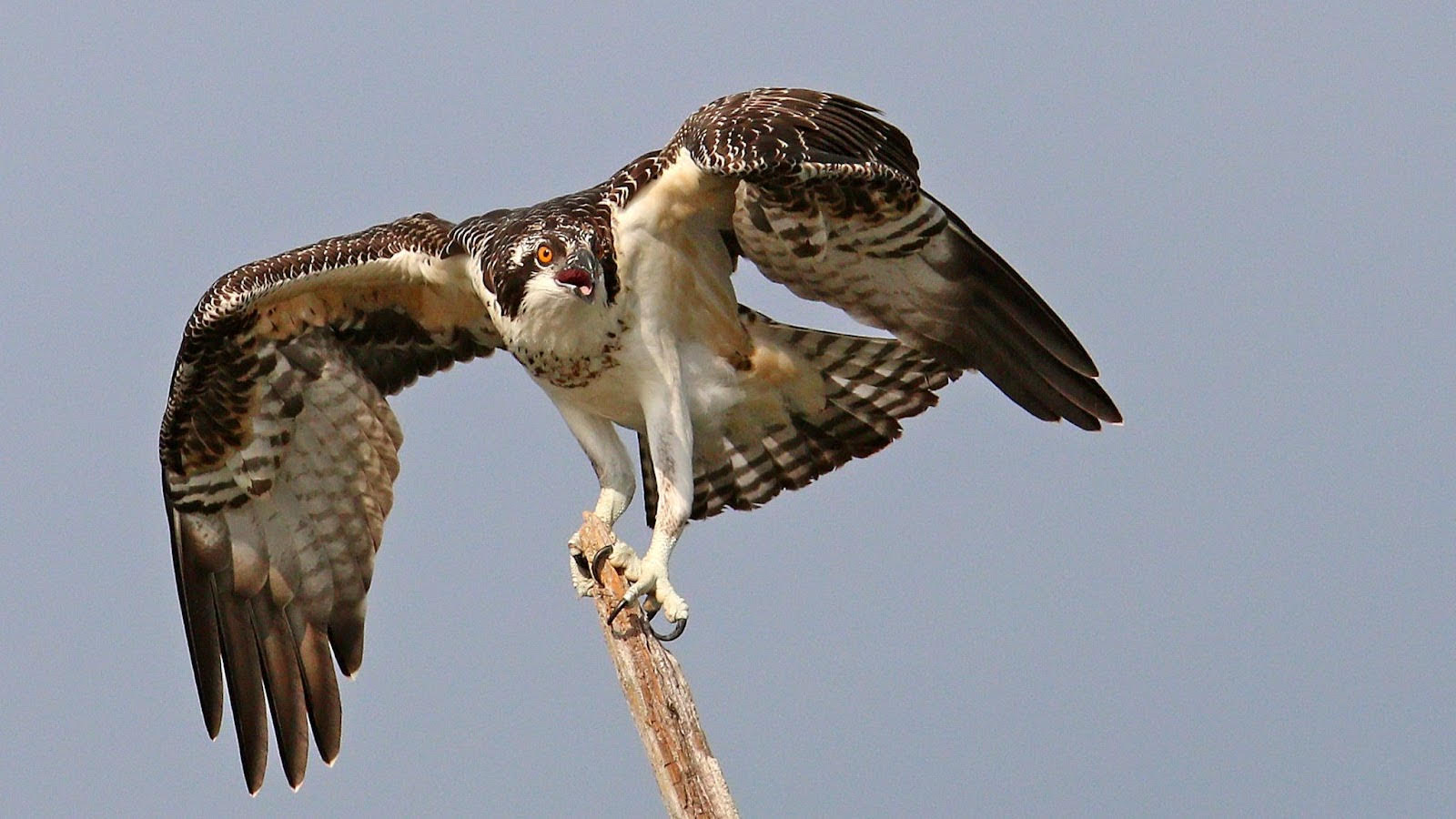Flying Fisherman: Dive into aerial angling with the osprey
ON 04-22-2024

Springtime and fishing in The Natural State go hand-in-hand. Whether you’re wading a trout stream or jigging for crappie on an oxbow lake, be on the lookout for a migratory raptor that may cause a bit of envy with its fishing prowess.
The osprey is a large, rangy raptor and can be spotted around nearly any body of water in Arkansas, especially during spring and fall migration. Fish is what’s for breakfast, lunch and dinner for this pro angler. It is the continent’s only raptor that plunge-dives to catch live fish, its main prey.
Watch for osprey flying on steady wingbeats with bowed “M”-shaped wings or circling high over shallow water. They’re prone to hover briefly before diving feet first with intense yellow eyes focused on their prey.
Fittingly nicknamed fish hawk, osprey are smaller than a bald eagle but are larger and longer winged than a red-tailed hawk. Bald eagles and osprey hunt in similar habitat but use different techniques – eagles catch fish just under the water’s surface with their talons while osprey are able to plunge 1 to 2 feet into the water before shooting back out with their catch.
Osprey have fishing down to a science – their success rate is sometimes as high as 70 percent – along with transportation of their catch. They are unusual among hawks in possessing a reversible outer toe that allows them to grasp with two toes in front and two behind. Velcro-like pads on the soles of their feet help them grip slippery fish.

Osprey are chock full of additional adaptations for their specialized hunting technique: A second set of clear eyelids function like swim goggles and long, slit-like nostrils seal shut when entering water. Pale plumage on their underside allows the bird to blend into the bright sky while its black ‘bandit’ eye mask reduces glare from the water. A highly developed uropygial gland on their rump and time spent preening spreads oil over their feathers, giving them a waterproof coating.
After a watery plunge, osprey often shake off like a wet dog and wing back to their perch or nest with the fish lined up head first in their talons to reduce wind resistance. Their catch usually measures about 6 to 13 inches and weighs one-third to two-thirds of a pound – a specialized intestine with strong enzymes breaks down their meal, bones and all.
Bald eagles have a lower catch rate and, ever the opportunist, will perch, watch and wait for an osprey to make a catch. The eagle then swoops in, harassing the osprey so it drops its fish, and the eagle scoops it up.
Like other birds of prey, osprey numbers crashed in the 1950s to 1970s when pesticides poisoned the birds and thinned their eggshells. The U.S. banned the use of the pesticide DDT in 1972 and osprey populations rebounded, becoming a conservation success story.

Whether it’s a slow day of fishing or fast and furious, osprey showing off their fishing skills can brighten a day on the water. Grab a pair of binoculars before heading out and find birding hotspots for the flying fisherman at the AGFC’s eBird portal – Two Rivers Park, Lake Dardanelle, Beaver Lake, Millwood Lake and Lake Ouachita, to name a few.
Don’t forget to log your views of any new bird species through the AGFC’s Wings Over Arkansas Program to earn recognition for your keen eyes and enthusiasm for watchable wildlife.
####
CUTLINES:
OSPREY WITH FISH
Osprey are the only Arkansas raptor that plunge into the water, sometimes as deep as two feet, to catch their prey before returning to the air. Photo by Robert H. Burton, USFWS.
OSPREY LANDING
An osprey can shift its talons so that two are in the rear and two are in the front, so that it can get a firm grip on fish and perch reliably on slender objects. Photo by Chris Newberry.
OSPREY ON PERCH
Osprey populations were once on the decline from the impacts of certain pesticides, but have recovered and can be found throughout Arkansas during spring and fall migrations as well as breeding season. Photo by Chris Newberry.
Recent News

Watch your wake
Jul. 2, 2025
Subscribe to Our Weekly Newsletter E-mails
Don’t miss another issue. Sign up now to receive the AGFC Wildlife Weekly Newsletter in your mailbox every Wednesday afternoon (Waterfowl Reports are published weekly during waterfowl season and periodically outside the season). Fishing Reports arrive on Thursdays. Fill in the following fields and hit submit. Thanks, and welcome!

